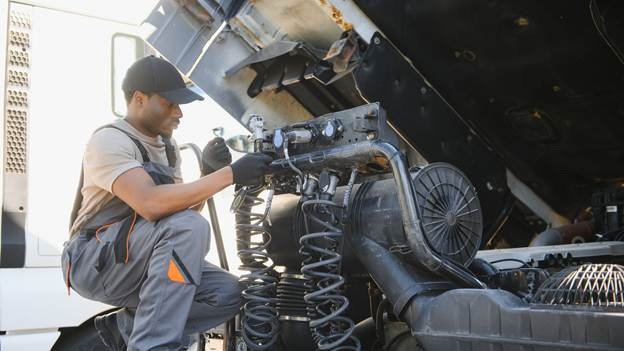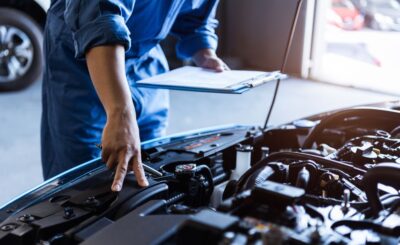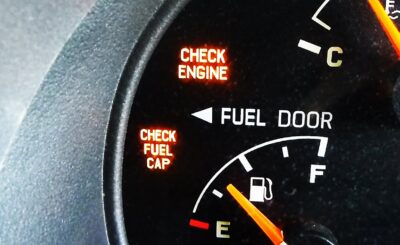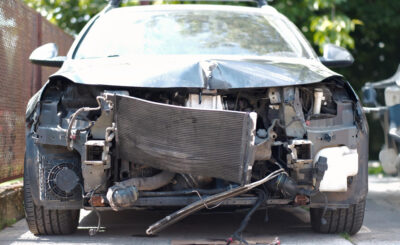Few things test a brake system like a muddy trail or a deep water crossing. Grit, silt, and moisture creep into caliper slide paths, pad backing plates, rotor faces, and parking brake hardware—exactly where corrosion loves to start. Left alone, that grime accelerates wear, causes uneven braking, and can seize components. Here’s a practical, trail-to-driveway checklist to keep your stopping power sharp and your hardware rust-free.
1. Rinse the cooling vanes and calipers—immediately
As soon as you’re off the obstacle, find clean water and flush the brakes while the rotors are still warm (not scorching). Aim the stream through rotor vanes, around the caliper bridge, and behind the dust shield. Early flushing dislodges sand before it cakes. Avoid blasting directly at hot rotors with high-pressure tips—use a wide fan to prevent thermal shock
2. “Dry the brakes” with controlled stops
After the initial rinse, drive slowly and perform a series of gentle brake applications to scrub the rotor faces and evaporate residual water. Five to eight light stops from 20–25 mph is enough. This helps lay down a clean transfer film and minimizes overnight flash rust on the swept area.
3. Inspect for trapped debris at the pads
When you get home (or at camp), pull each wheel and look for pebbles wedged between pad and rotor, or mud packed along pad edges. Grit here causes scoring and taper wear. If you can, pop the pads out: brush the pad ears and abutment points, then apply a thin layer of high-temp silicone or moly brake grease to the hardware—not the friction surfaces.
4. Free and lube the caliper slide pins
Slide pins are the first victims of muddy water. Pull them, wipe off the old grease, and check for pitting or moisture tracks. Re-lube with a high-temp, rubber-safe brake lubricant and confirm smooth, springy travel. A sticky pin doesn’t just squeal—it cooks one pad, warps the rotor, and invites corrosion.
5. Clean rotor hats and hub faces
Mud loves the rotor hat lip and wheel hub mating surface. Wire-brush both, then apply a whisper-thin anti-seize layer to the hub face (not the studs). This prevents galvanic corrosion and rotor runout caused by caked rust, which shows up as pedal pulsation on the next highway descent.
6. Service drum-in-hat parking brakes (if equipped)
Many 4×4 rear rotors hide a small drum parking brake inside. After water crossings, remove the rotor and blow out the drum cavity. Brush shoe edges and pivot points; verify the adjuster spins freely. A seized parking brake shoe will drag just enough to overheat on-road and corrode off-road.
7. Refresh fluid on schedule—and sooner after immersion
Brake fluid is hygroscopic. Repeated dunking accelerates moisture ingress through hoses and seals. If your flush interval is every two years, move it up after a wet season of wheeling. Use fresh, quality DOT-rated fluid and bleed until it runs clear at each caliper. Cleaner fluid resists boiling and internal corrosion.
8. Re-seat pads with a light bed-in
If you pulled pads or heavily cleaned the system, perform a mini bed-in: 6–8 moderate decelerations from 30–40 mph without coming to a full stop, then a short cooldown drive. This resets a uniform transfer layer, reducing the risk of uneven deposits that feel like warped rotors.
9. Protect exposed metal—selectively
Avoid painting friction surfaces, but consider a rust-inhibiting coating on rotor hats, caliper brackets, and dust shields. High-temp coatings or zinc-rich spray help in salted winter states. Touch up chips promptly; bare steel around the hat or bracket ears blooms fast after a muddy weekend.
10. Build a post-trail routine you actually follow
Consistency beats heroics. Stock a tote with: wide-fan nozzle, soft brushes, brake cleaner, lint-free rags, rubber-safe lubricant, copper or ceramic anti-seize, and a torque wrench. A 45-minute ritual after each muddy trip will extend pad life, keep rotors smooth, and avoid seized hardware when you need braking most—on long, loaded descents.
Extra Pro Tips
- Mind tire/wheel choice: Aggressive mud-terrains sling grit straight into rotor/caliper openings. Wheel designs with larger windows are easier to rinse; beadlocks trap silt, so plan extra cleaning time.
- Check shields and lines: Bent dust shields rub rotors and trap mud; straighten or replace. Inspect flexible brake lines for nicks after rock gardens—tiny cuts invite moisture.
- Heat is your friend—within reason: After cleaning, a short drive with light braking warms components, evaporating hidden moisture without glazing pads.
- Don’t ignore noises: Persistent scraping or a hot wheel after a rinse suggests debris behind the pad or a dragging parking brake. Address it before the next commute.
Mud and water crossings are part of the adventure, but they don’t have to shorten the life of your brake system. Treat brakes as a sealed-but-serviceable system: keep slide paths clean and lubricated, refresh fluid proactively, and restore a clean transfer layer after every soak. If you’ve noticed pulsation, pulls, or a soft pedal after a wet trail day, it may be time for a thorough inspection and professional brake repair for 4×4safety and reliability. Do the small things every time, and you’ll avoid the big, rusty, seized things later.








